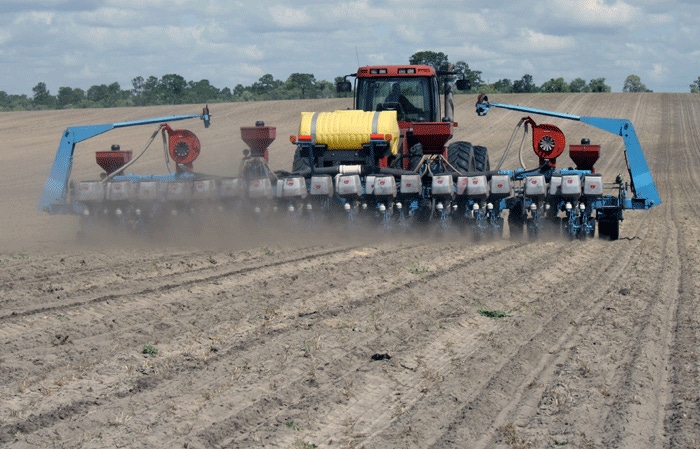November 4, 2014

As 2014 winds down and producers prepare for 2015, it is time to review and evaluate farm leases. In most cases, farm leases are signed in the December – January time period. This is especially true for renewals on annual leases, and also the timeframe for securing land that is coming up for rent.
Lease agreements should be designed to achieve efficiency and provide for an equitable distribution of income and expenses. An efficient lease is achieved if it allows the farm to realize its total potential returns while protecting the interests of both parties. An equitable lease provides each party shared returns while protecting the interests of both parties. A written lease is highly desirable and can prevent problems in the future.
The two parties involved must select the lease type best suited to their situation. The landowner and producer must determine what contributions of labor, capital and management skill they are able and willing to provide and what production and price risks each party will bear. Making these determinations will give a general indication of the type of agreement which best fits. The determination of an appropriate crop-share or cash lease arrangement will have a significant influence on net-farm income and satisfaction of the two parties.
Cash lease has been popular for many years. The primary attraction of this method to landowners is the minimal responsibility. This type of lease also provides tenants maximum operating freedom. If the decision is made to use a cash rental arrangement, what is fair cash rent for the cropland? The last few years have seen an increase per acre in cash rent leases as crop prices have stayed in a historically higher range. Now that prices are projected lower in 2015 than 2014, it may be time for a reevaluation of the lease.
Establish a cash-rent rate
Prevailing cash rental rates. General knowledge of cash rents in the area is needed with adjustments made for differences in land productivity. The National Agricultural Statistic Service has cash rent data available at their Quick Stats website. In many areas it is broken down by county. This can be a good place to start when evaluating rents. The Tennessee cash and pasture rent data has been summarized and can be found at our UT Crop Economics website. Bear in mind this data is the average of rent information collected from NASS surveys and may not reflect cash rent on farmland that has just been bid for rent.
Ability of Tenant to Pay. Many times tenants will pay too much for the use of land in their desire to control more land and spread fixed machinery costs over a larger acreage. Before bidding for land, tenants should carefully estimate how much capital will be available to pay for land use after deducting appropriate out-of-pocket costs, fixed costs on machinery and a return to management from expected gross revenue.
Some farmers prefer to include only variable costs in estimating the maximum amount that can be paid. Their reasoning is that for a particular year, true fixed or overhead costs continue regardless of whether or not the machinery and equipment are used. However, farm machinery will not be eventually replaced unless all costs are expected to be recovered. Tenants should estimate the maximum that can be paid and still allow all specified costs to be covered. The tenant should expect to lease land at something less than the maximum to allow a profit and remain sustainable.
Landowner’s Cost. The landowner needs to calculate his or her cost of ownership. The major considerations in determining the owner’s cost are land valuation and selection of an appropriate interest rate to apply to the land value. The per-acre land price should reflect a realistic market value for the cropland. A realistic interest rate is the 4 to 6 percent range, based on studies which show current cropland earnings to be in this range when land appreciation is excluded.
Landowner’s Adjusted Net Share Rent. This approach determines the amount of rent the landowner would receive under a crop-share arrangement after paying any costs and after adjusting for reduced risk. Fixed cash rents are normally expected to be lower than share rents, since the landowner shifts yield and price risks to the tenant. Once the net share rent has been estimated, the parties must decide how much this rent should be adjusted for risk reduction to the landowner. In many situations, net share is reduced 10 to 20 percent to a cash equivalent, reflecting the reduced risk to the landowner.
Bargaining position
The bargaining position of the two parties is important in establishing the specific cash rent. The bargaining process should provide an opportunity for each party to understand the position of the other. The most effective bargaining occurs when each party knows the value of his or her own contributions, the value of the other party’s contributions and local leasing arrangements.
Improved cash leases can lead to higher farm income, reduced soil and water loss in many cases, and more enduring personal relationships. These improvements can result from the use of farm economic principles which are designed to promote increased crop income and an equitable division of this higher income.
Opportunities for increased farm income and more satisfactory relationships provide incentive to improve farm lease arrangements. For more information on cropland leasing, visit the Leasing Resources page on the Tennessee Farmland Legacy website.
You May Also Like




